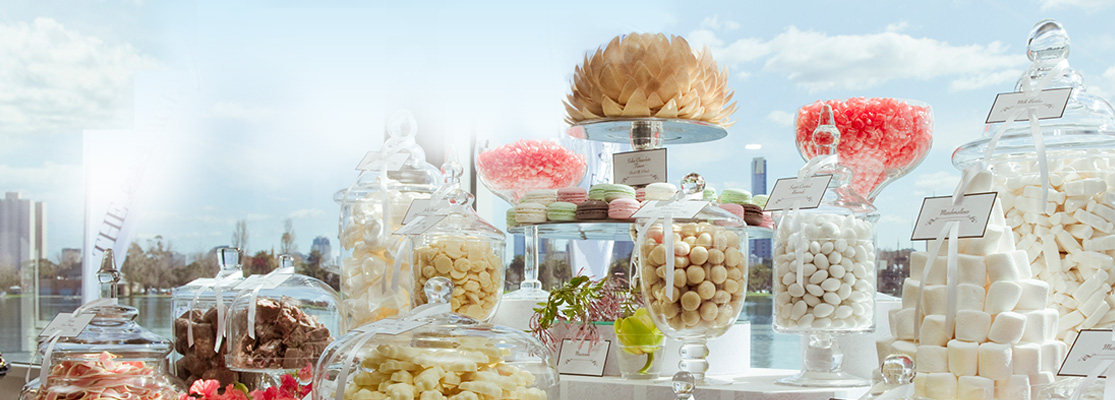The trick behind why kids are drawn to certain treats.
Every year as Halloween approaches, the kids in my neighborhood become fixated on one house, the one owned by the fireman who always hands out full-size candy bars. After years of being dissed for the “fun-size” bars I deliver (“Mom, smaller candy bars are not more ‘fun.’ ”), last year, I decided to earn a little respect by going upmarket. On Halloween night, I poured the full-size Milky Ways and Kit Kats I’d bought into a big basket, and for a dash of color, arranged a bouquet of green, blue, pink, red, and brown Tootsie Pops in the middle. It wasn’t long before the first group arrived. They scanned the spoils, hesitated for a minute, and then they each took a Tootsie Pop. Another group of trick-and-treaters followed on their heels—and did the same thing. That continued until the Tootsie Pops in the basket were all gone. Fearing that I would get stuck with two cases of full-size candy bars, I forgot about aesthetics and didn’t restock the pops. That’s when I got the reaction I was hoping for—happy shouts of approval—and the bars moved briskly for the rest of the night.
But why in the world would anyone choose a teeny lollipop over a big fat chocolate bar? It turns out that the psychology of picking candy is more complicated than “the bigger, the better.”
Caitlin Kendall, the manager of the CandyAddict.com Web site, which publishes candy news and reviews, has seen a similar reaction among trick-or-treaters. Even when offered a choice of a dozen different kinds of candy, “They kept digging through the basket and taking the lollipops,” she says. The plain kind. With the cellophane wrapper. The kind you used to get from the doctor after a shot. “My sense is that the younger ones are drawn to color more than content,” she says. “Even though they may only take two licks and throw it away.” And the older kids? “I think that chocolate gets boring for kids if they get it at house after house. If someone is offering something different, they’ll go for that.”
In fact, while lollipops are the second most popular Halloween candy—about 30 percent of households give them out, according to the National Candy Association—chocolate is almost twice as popular, found at 54 percent of households. Brian Wansink, director of Cornell University’s Food and Brand lab, echoes Kendall’s sentiments, saying that kids are drawn to what’s new and unusual, and may neglect their favorite flavor or candy if that means selecting the single piece left of an alternate treat.
Nancy Childs, professor of food marketing at St. Joseph’s University in Philadelphia, adds that though kids are heavily influenced by advertising, the rareness of, say, Tootsie Pops, could overshadow the effect of advertising. “Kids may not run into Tootsie Roll pops as frequently,” she says. “You don’t find them in vending machines and at the checkout counter, all the places where kids tend to run into candy.”
Younger children are also more likely to go for the sweeter, sugary taste of lollipops, Skittles, and other gummy candies than they are a rich chocolate treat, Wasink says. While both adults and children have roughly the same number of tastebuds, children have smaller tongues, meaning that their tastebuds are more concentrated, and thus they’re able to experience more intense flavor in sugary, fruity flavors. “For little kids, a sugary thing like that tastes a lot better than it does to us,” says Wansink. (This also explains, says Childs, why children are more likely to seek out candy with “extreme” sour flavors.)
Lollipops are attractive to younger kids for another reason: “Under 8 years old, a higher involvement with eating is something that little kids like,” says Wansink. Little kids literally like to play with their food. “Suckers have a higher level of eating involvement—you can click them against your teeth, put it your mouth, and play with it, compared to a candy bar that you just wolf down,” he says.
However, kids’ candy decisions don’t compute with Steven Levitt, the William B. Ogden Distinguished Service Professor of Economics at the University of Chicago, the author of the best seller Freakonomics: A Rogue Economist Explores the Hidden Side of Everything, and a man who has made his reputation explaining the unexplainable behavior of the American consumer.
“I’m suspecting that all future economists would go for the candy bar,” he wrote in an e-mail. “Especially if they have brothers and sisters with whom they could trade candy afterwards.”
Source: Newsweek.com
Purchase lollies for your candy bowl here.


